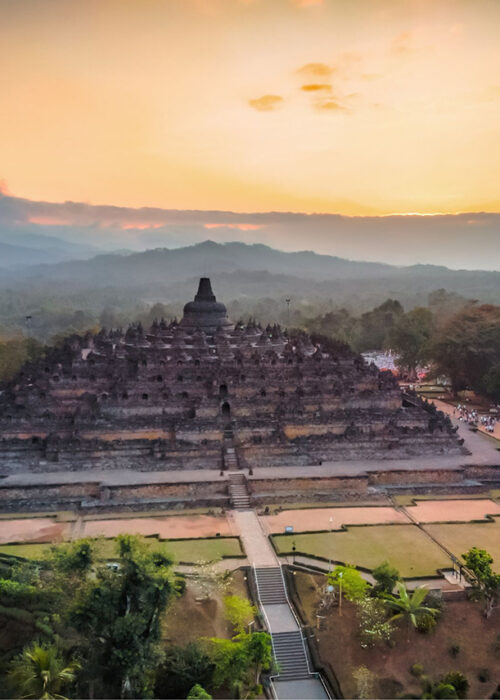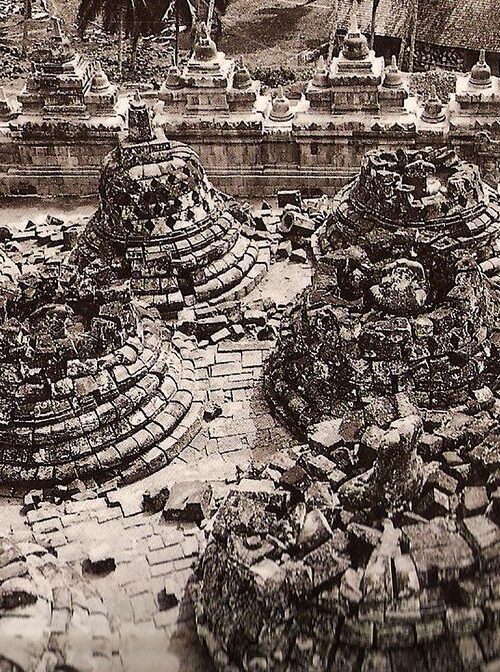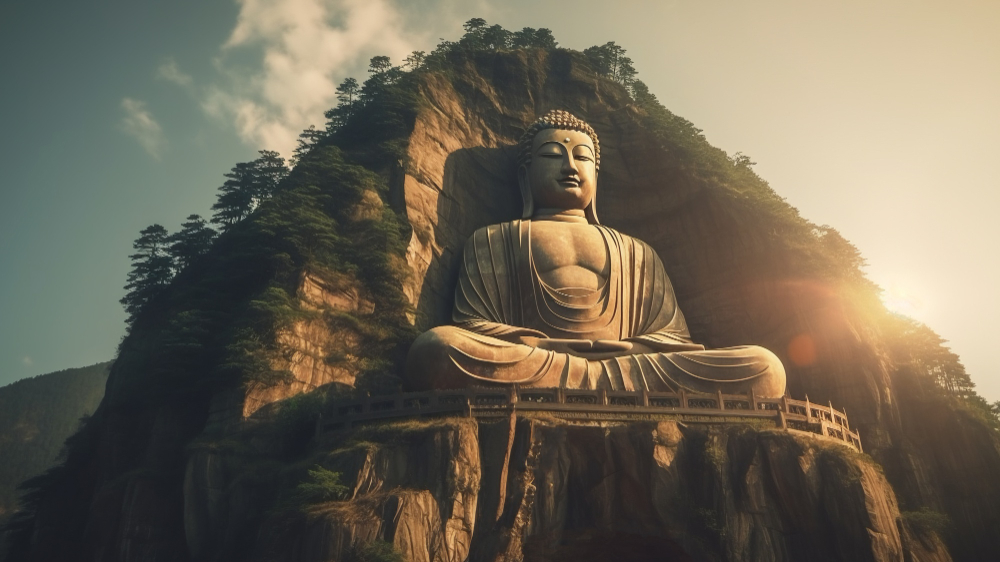
Built with about 2,000,000 cubic feet (56,600 cubic metres) of grey volcanic stone, Borobudur encloses a small hill and is shaped like a stepped pyramid with three major levels.
A square base, a middle level of five square terraces, and an upper level of three circular terraces — totalling, in effect, nine lesser sections (the number nine is mystic in Buddhism). The centre, 115 feet (35 metres) above the base, consists of a large individual stupa.
Each of the monument’s three main levels represents a stage on the way to the bodhisattva ideal of enlightenment; symbolizing this spiritual journey, a pilgrim begins at the eastern stairway and walks clockwise around each of the monument’s nine levels before reaching the top, a distance of more than 3 miles (5 km).
At the lowest level, which is partially hidden, are hundreds of reliefs of earthly desires, illustrating kama-dhatu (“the realm of feeling”), the lowest sphere of the Mahayana Buddhist universe. On the next level, a series of reliefs depict rupa-dhatu (the middle sphere and “the realm of form”) through events in the life of the Gautama Buddha and scenes from the Jatakas (stories of his previous lives).
The upper level illustrates arupa-dhatu, “the realm of formlessness,” or detachment from the physical world; there is little decoration, but lining the terraces are 72 bell-shaped stupas, many still containing a statue of the Buddha, partly visible through the perforated stonework.
During the Waicak ceremony, which occurs once a year during a full moon, thousands of saffron-robed Buddhist monks walk in solemn procession to Borobudur to commemorate the Buddha’s birth, death, and enlightenment. Read more: Britannica

The era during which the Borobudur was constructed by the Javanese remains enshrouded in legend and mystery.
- No records documenting its construction or purpose have been discovered, and the dating of the temple relies on artistic comparisons of reliefs and inscriptions found in Indonesia and other parts of Southeast Asia.
- The Indian subcontinent began exerting a significant cultural and religious influence on what is now present-day Indonesia around the 1st century CE.
- This influence experienced rapid growth from approximately 400 CE onward. Hindu and Buddhist merchants and traders settled in the region, intermingling with the local population, and fostering long-distance trade relations between the indigenous Javanese and ancient India.
- Over the centuries, the Javanese assimilated the culture and religions of ancient India into their own, creating a unique blend.
Archaeological and scholarly consensus places the end of Borobudur’s construction around c. 800-825 CE. King Samaratungga (r. c. 790-835 CE?) is traditionally regarded as the Javanese king who oversaw the completion of Borobudur’s construction.
The name “Borobudur” itself is the subject of intense scholarly debate and is a lingering mystery. Some scholars contend that the name stems from the Sanskrit Vihara Buddha Uhr or the “Buddhist Monastery on a Hill,” while others, in turn, argue that Budur is nothing more than a Javanese place name. A stone tablet dating from 842 CE makes mention of Bhumisambharabhudara or the “Mountain of Virtues of Ten Stages of the Boddhisattva.” It is probable that the name “Borobudur” could be related to “Bharabhudara.” Read more: World History Encyclopedia
Borobudur is located about 40 km (25 miles) to the northwest of Yogyakarta and some 86 km (53 miles) west of the city of Surakarta in central Java.
The temple lies in an area between two volcanoes – Mt. Sundoro-Sumbing and Mt. Merbabu-Merapi – as well as two rivers – Progo and Elo. Borobudur is situated very close to two other Buddhist temples in the Kedu Plain: Pawon and Mendut.
Borobudur Photo Gallery
Explorer's Spirit
- Be the first to read a new story,
- Don’t miss new adventures,
- Embark in a magical Journey,
Submit your email and stay up-to-date!








